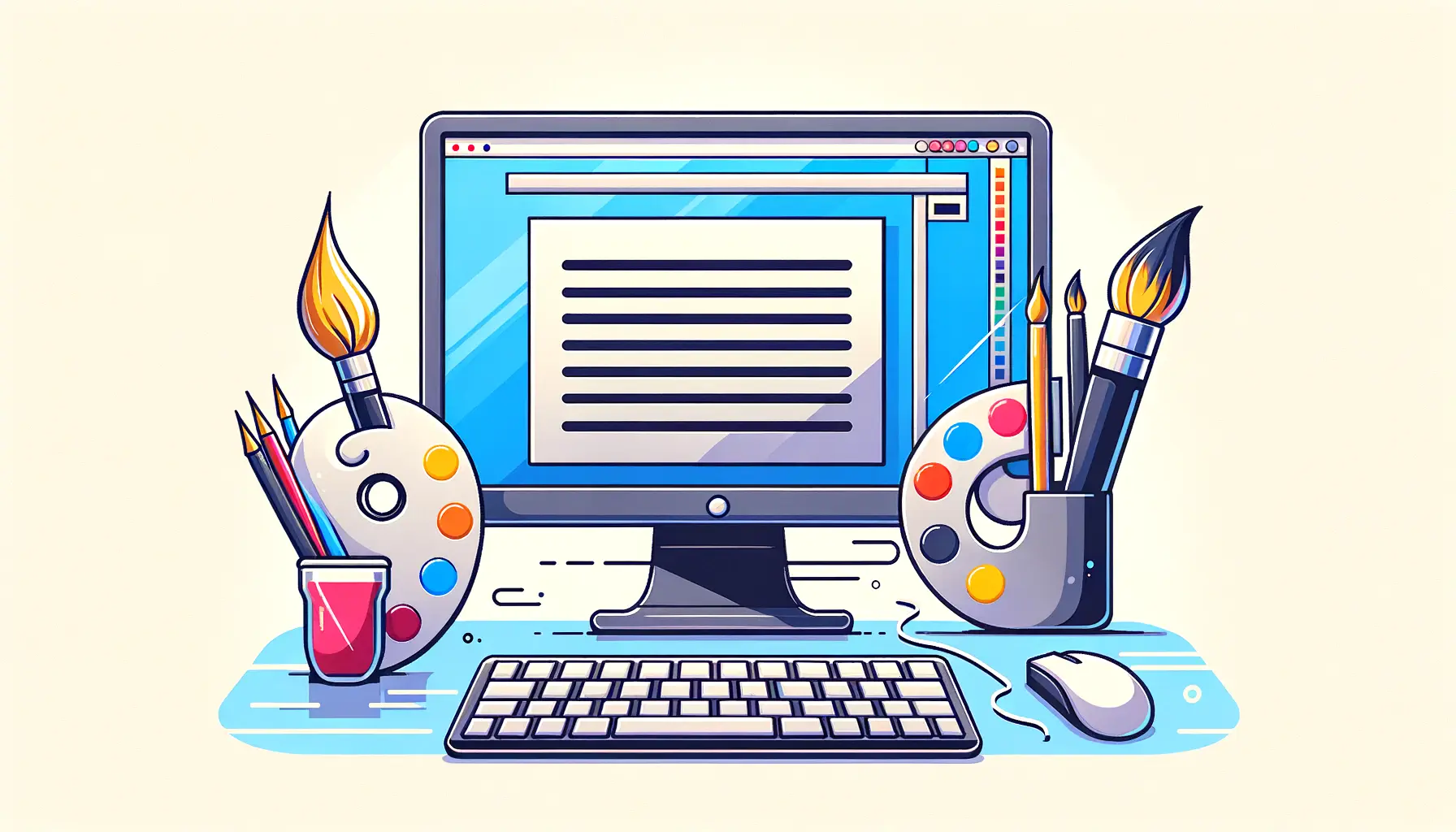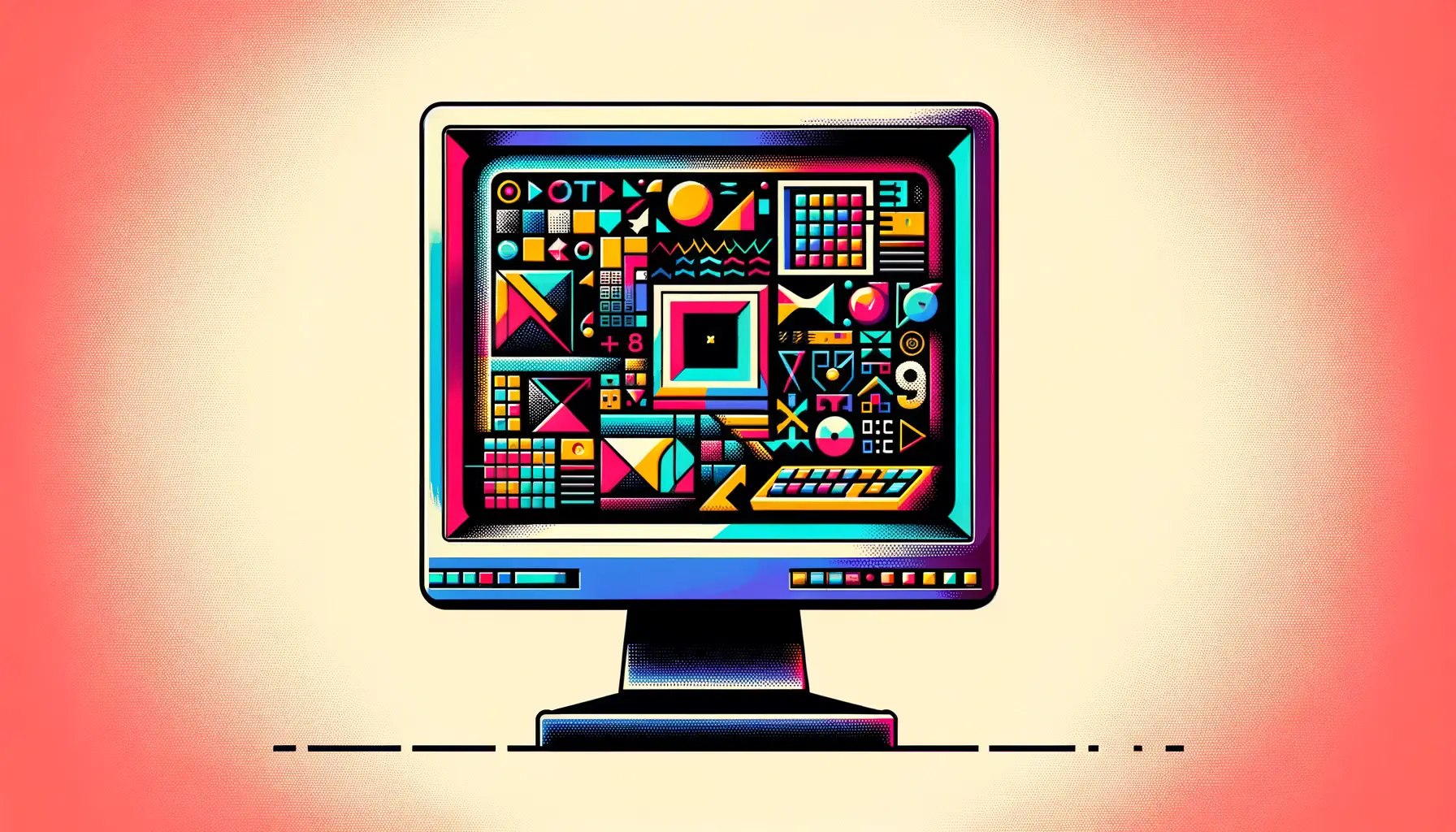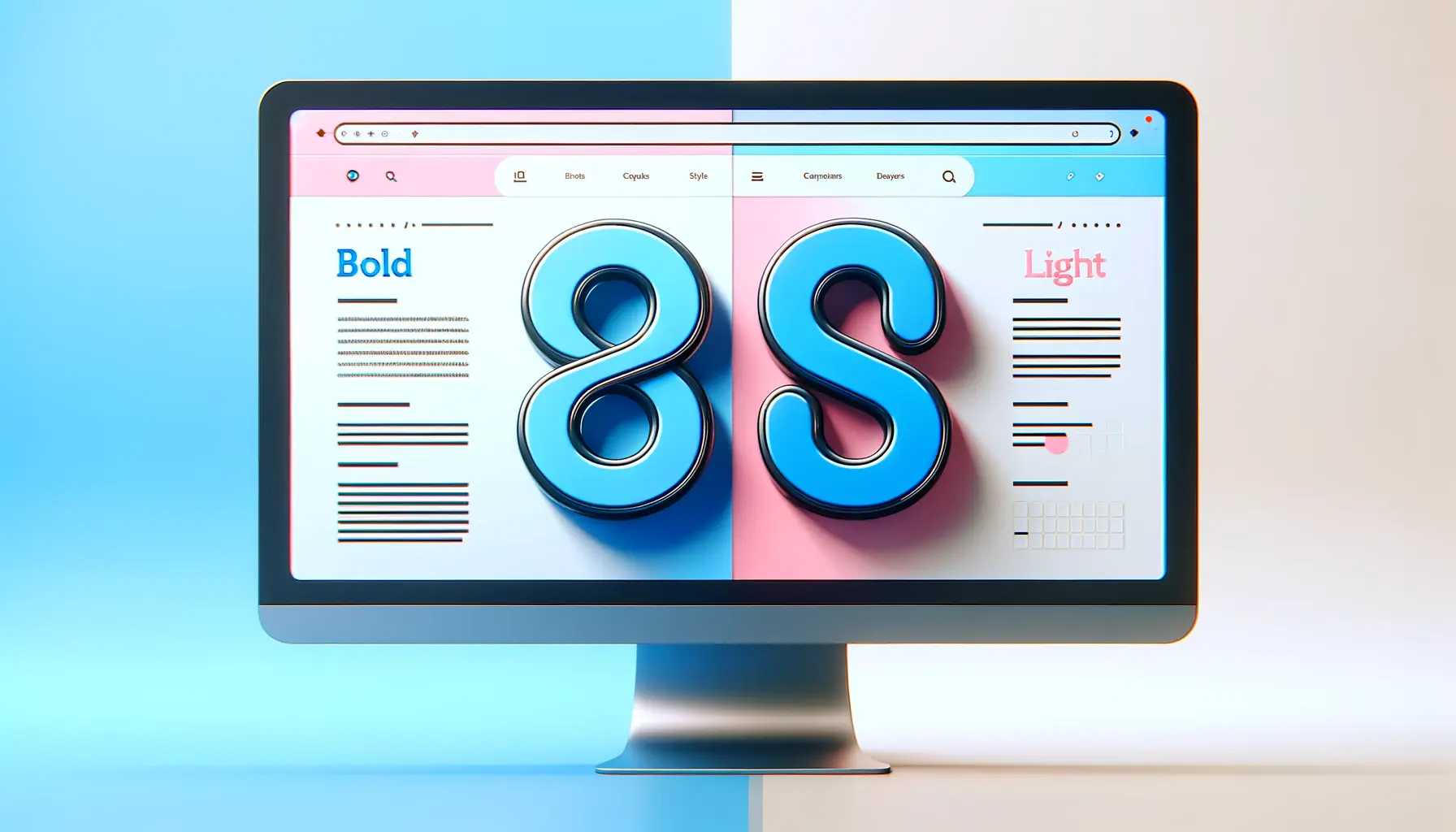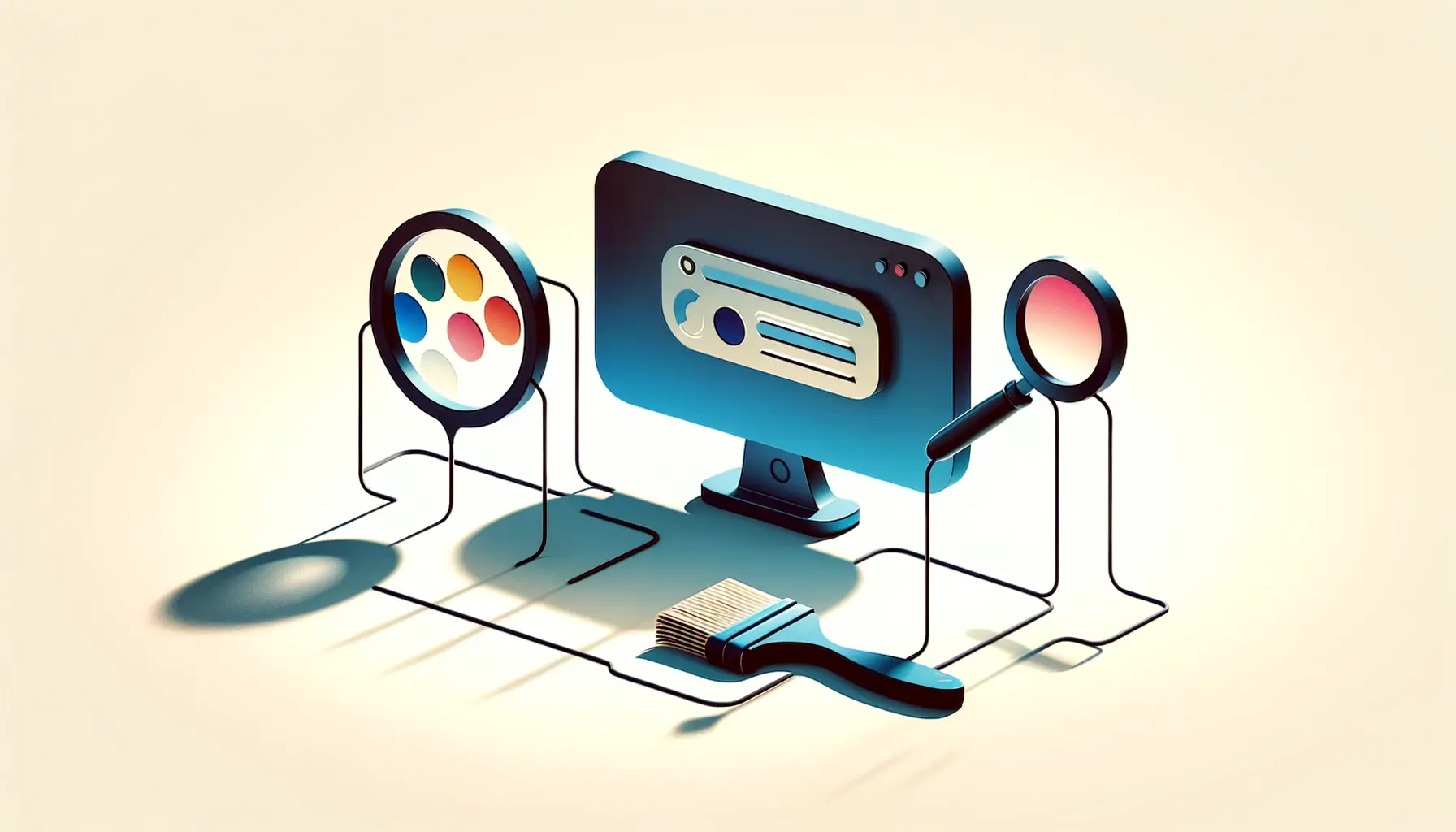The digital landscape is continuously evolving, and with it, the elements that define its aesthetics and usability.
Among these elements, typography holds a pivotal role in shaping user experience, conveying brand identity, and ensuring the readability of web content.
As we step into 2024, the choice of font for web projects has become more crucial than ever.
This article delves into the intricacies of selecting the perfect font for your web project, emphasizing the importance of typography in today’s digital age.
Typography in web design is not just about choosing pretty fonts; it’s about creating a harmonious visual hierarchy that guides users through your content effortlessly.
The right font can elevate your brand’s message, while the wrong choice can detract from your site’s overall impact.
With the vast array of fonts available, designers and developers are tasked with making informed decisions that align with their project’s goals, audience preferences, and the latest design trends.
- Understanding Typography Fundamentals
- Current Trends in Web Typography
- Typography and User Experience (UX)
- Font Selection Process
- Impact of Typography on SEO
- Integrating Typography with Overall Design
- Future of Typography in Web Design
- Conclusion: The Art and Science of Choosing the Right Font
- FAQs: Choosing the Right Font for Your 2024 Web Project
Understanding Typography Fundamentals
The Importance of Font Choice
At the heart of typography lies the choice of font, a decision that can significantly influence your project’s success.
A well-chosen font enhances readability, user engagement, and accessibility, serving as the silent ambassador of your brand.
It’s not merely about aesthetics; it’s about creating a seamless interaction between the user and the digital interface.
The psychology behind font selection is profound, with each typeface carrying its own personality and emotional impact.
Choosing the right font requires a deep understanding of your project’s core message and the emotions you wish to evoke.
Whether it’s the trustworthiness of serif fonts or the modernity of sans-serif fonts, each choice communicates a different story.
This decision-making process is further complicated by the need to ensure compatibility across various devices and screen sizes, making font choice a critical element in web design.
Serif vs. Sans-Serif
The debate between serif and sans-serif fonts is a longstanding one in the typography community.
Serif fonts, characterized by their decorative strokes or “feet” at the end of letters, are often associated with tradition, reliability, and authority.
They are typically favored for print media and more formal web content.
On the other hand, sans-serif fonts, known for their clean and straightforward appearance, exude modernity and simplicity, making them a popular choice for digital interfaces.
The decision between serif and sans-serif should be guided by your project’s context, target audience, and the overall tone you aim to set.
While sans-serif fonts offer better readability on digital screens, serif fonts can add a touch of elegance and sophistication to your design.
Understanding the strengths and limitations of each type can help you make a more informed choice that aligns with your web project’s objectives.
The choice between serif and sans-serif fonts is more than a matter of aesthetics; it’s a strategic decision that can affect user engagement and readability.
Current Trends in Web Typography
The landscape of web typography is ever-evolving, with trends emerging that reflect the changing preferences and technologies of the digital world.
Staying abreast of these trends is crucial for designers and developers aiming to create impactful and contemporary web projects.
Here, we explore some of the most significant typography trends shaping the web in 2024.
Responsive and Variable Fonts
As web access via mobile devices continues to rise, the demand for responsive design has extended to typography.
Responsive fonts adjust seamlessly across different screen sizes and resolutions, ensuring optimal readability and user experience.
Closely related are variable fonts, which offer a range of customization options within a single font file, allowing for fine-tuned adjustments in weight, width, and other attributes without loading multiple font files.
This not only enhances design flexibility but also improves page load times.
- Minimalist and Clean Typography: The trend towards minimalism in web design has influenced typography, with a preference for simple, clean fonts that offer clarity and ease of reading. This trend emphasizes the importance of content over decorative elements, focusing on delivering a straightforward and efficient user experience.
- Experimental and Custom Fonts: As brands strive to stand out in a crowded digital space, the use of experimental and custom fonts is on the rise. These fonts are designed to reflect a brand’s unique identity and values, creating a distinctive visual language that differentiates them from competitors.
Color Fonts and Typography
Color fonts, also known as chromatic or multicolor fonts, are gaining popularity for their ability to incorporate multiple colors, gradients, and textures into a single glyph.
This trend opens up new possibilities for creative expression in web typography, allowing designers to add depth and vibrancy to their text.
While color fonts are still in their infancy, their potential for enhancing brand identity and user engagement is significant.
Understanding and leveraging these trends can give your web project a competitive edge, making it more engaging, accessible, and in tune with current design standards.
However, it’s essential to balance trendiness with functionality, ensuring that your typographic choices enhance the user experience rather than detract from it.
Incorporating current typography trends can significantly impact your web project’s success, but always prioritize readability and user experience.
Typography and User Experience (UX)
The interplay between typography and user experience (UX) is a critical consideration in web design.
The right choice of font can significantly enhance usability, accessibility, and overall user satisfaction.
This section explores how typography influences UX and offers strategies for making typographic decisions that support a positive user experience.
Typography affects UX in several key ways, from readability and legibility to mood and brand perception.
A font that’s easy to read reduces cognitive strain, making information consumption more effortless and enjoyable for the user.
Moreover, the emotional impact of typography cannot be understated; the style of a font can convey warmth, seriousness, playfulness, or professionalism, aligning with the brand’s voice and tone.
Enhancing Readability and Accessibility
- Contrast and Color: Ensuring high contrast between text and its background is essential for readability. Poor contrast can make text difficult to read, especially for users with visual impairments. Additionally, choosing colors that complement the font and background enhances readability and aesthetic appeal.
- Font Size and Spacing: Adequate font size and spacing (including line height and letter spacing) are crucial for readability. Text that’s too cramped or too spread out can be challenging to read. Responsive design principles dictate that font sizes should adjust based on the device’s screen size to ensure text remains legible across all platforms.
Creating a Cohesive Brand Experience
Typography is a powerful tool for conveying brand identity and creating a cohesive brand experience across all touchpoints.
Consistent use of a brand’s fonts on the website, in marketing materials, and on social media helps to build brand recognition and trust.
Selecting a font that reflects the brand’s values and personality can significantly enhance the user’s connection to the brand.
Moreover, incorporating unique or custom fonts can set a brand apart from its competitors, offering a unique value proposition through design.
However, it’s important to balance uniqueness with usability, ensuring that the chosen fonts do not compromise the user’s ability to easily consume content.
Always consider the broader context of your brand and the user’s needs when selecting fonts, aiming for a balance between uniqueness and usability.
Font Selection Process
Choosing the right font for your web project involves a series of strategic decisions.
This process is not just about selecting a font that looks good; it’s about finding a typeface that aligns with your project’s goals, audience expectations, and overall design aesthetic.
Here, we outline a comprehensive approach to selecting the perfect font for your 2024 web project.
Understanding the project’s context and objectives is the first step in the font selection process.
This includes considering the brand’s personality, the message you wish to convey, and how the font will be perceived by your target audience.
A font that works well for a tech startup’s website might not be suitable for a law firm’s online presence.
Considerations for Choosing the Right Font
- Readability and Legibility: The primary function of text on a website is to be read. Choose fonts that are easy to read on various devices and screen sizes. This includes considering the font’s x-height, character spacing, and weight.
- Brand Alignment: The font should reflect the brand’s personality and values. Whether you’re aiming for a modern, traditional, friendly, or authoritative tone, the font should reinforce the brand’s identity.
- Functionality: Consider the functional aspects of the font, such as its availability on different platforms, loading times, and compatibility with various browsers and devices.
Testing and Feedback
Once potential fonts have been identified, the next step is to test them in context.
This involves creating mockups or prototypes of your web project with the selected fonts and assessing their performance across different scenarios.
Pay attention to how the fonts render on different devices and under various lighting conditions.
Gathering feedback from users and stakeholders during this phase is invaluable, as it provides insights into how the fonts are perceived by others.
Iterative testing and refinement are key to selecting the right font.
It’s often beneficial to compare a shortlist of fonts side-by-side to evaluate their impact on the user experience and overall design.
This process may reveal subtle differences in readability, mood, and compatibility that can significantly influence the final decision.
The font selection process is iterative and should involve testing, feedback, and refinement to ensure the chosen font aligns with your project’s goals and user needs.
Impact of Typography on SEO
The influence of typography on search engine optimization (SEO) is often overlooked, yet it plays a crucial role in the performance of a web project.
The right typography can enhance the user experience, reduce bounce rates, and improve the overall readability of your content, all of which are factors that search engines consider when ranking websites.
This section explores how typography impacts SEO and what you can do to leverage it for better search engine visibility.
Search engines aim to provide users with the most relevant and user-friendly results.
Websites that offer a superior user experience, including those with well-chosen typography, tend to rank higher.
Typography affects how long users stay on your site, how they interact with your content, and whether they find your site accessible and easy to navigate.
Enhancing Readability for SEO
- Clear Hierarchy: A well-defined typographic hierarchy helps users and search engines understand the structure of your content. Using headings, subheadings, and body text effectively can improve your site’s readability and SEO.
- Mobile Optimization: With the increasing importance of mobile-first indexing, ensuring your typography is optimized for mobile devices is essential. Responsive fonts that adjust to screen size and orientation can significantly improve the mobile user experience, positively impacting your SEO.
Speed and Performance
Typography can also affect your website’s loading times, which is a critical factor in SEO.
Heavy font files can slow down your site, negatively impacting user experience and search engine rankings.
Opting for web-optimized fonts and utilizing font-display techniques can help mitigate these issues, ensuring your typography enhances rather than hinders your SEO efforts.
Moreover, the accessibility of your website’s typography can influence its SEO.
Search engines favor websites that are accessible to a broader audience, including those with visual impairments.
Ensuring your typography adheres to accessibility standards, such as sufficient contrast and scalable font sizes, can improve your SEO rankings.
Optimizing your typography for readability, speed, and accessibility can have a positive impact on your SEO, enhancing your website’s visibility and user engagement.
Integrating Typography with Overall Design
The integration of typography with the overall design of a web project is a delicate balancing act that requires thoughtful consideration.
Typography should not only be functional and readable but also complement and enhance the design aesthetic of the website.
This section discusses strategies for achieving harmony between typography and design elements to create a cohesive and visually appealing web presence.
Typography is a fundamental component of web design that communicates the tone and voice of your brand while guiding users through your site’s content.
The choice of fonts, their size, color, and spacing, all contribute to the visual hierarchy that helps users navigate and understand your website.
Achieving a harmonious integration of typography and design involves a careful selection of fonts that align with the design elements and the overall branding strategy.
Visual Hierarchy and Balance
- Consistency: Consistent use of typography throughout the website helps to create a sense of cohesion. Select a primary font for headings and a complementary font for body text, ensuring they work well together and with the overall design theme.
- Contrast: Utilizing contrast effectively can enhance the readability of your content and draw attention to key elements. Contrast can be achieved through font weight, size, color, and spacing, helping to establish a clear visual hierarchy.
Aligning Typography with Brand Identity
Your website’s typography should reflect and reinforce your brand identity.
The fonts you choose can convey a lot about your brand’s personality, whether it’s modern and innovative, traditional and reliable, or fun and quirky.
By aligning your typography with your brand’s visual identity, you create a more immersive and memorable experience for your users.
Furthermore, the integration of typography with design elements like color schemes, imagery, and layout can significantly impact the user’s perception and experience of your website.
A well-designed typographic system not only improves readability and user engagement but also contributes to the aesthetic appeal and professionalism of your web project.
Ignoring the integration of typography with your website’s overall design can lead to a disjointed user experience and dilute your brand’s message.
Future of Typography in Web Design
The future of typography in web design looks promising, with advancements in technology and design tools paving the way for more innovative and user-centric typographic experiences.
As we look ahead, it’s clear that typography will continue to play a crucial role in shaping the digital landscape, influencing how content is consumed and interacted with on the web.
This section explores potential future trends and developments in web typography that could redefine our approach to designing digital experiences.
One of the most exciting prospects is the continued evolution of variable fonts.
These fonts offer unparalleled flexibility and efficiency, allowing designers to adjust a wide range of typographic attributes with a single font file.
As browser support for variable fonts expands, we can expect to see more creative and dynamic uses of typography on the web, enhancing both aesthetics and performance.
Advancements in Accessibility and Inclusivity
- Improved Readability: Future developments in typography will likely focus on improving readability for a broader range of users, including those with visual impairments or dyslexia. This could involve the creation of fonts specifically designed to enhance legibility and comprehension.
- Inclusive Design Practices: As the web becomes increasingly global, the need for typography that supports a wide range of languages and scripts will grow. This will push designers to adopt more inclusive design practices, ensuring that web content is accessible to a diverse audience.
Integration with Emerging Technologies
The integration of typography with emerging technologies such as augmented reality (AR), virtual reality (VR), and voice interfaces presents new challenges and opportunities for designers.
Typography in these spaces will need to adapt to three-dimensional environments and interactive experiences, requiring innovative approaches to design and implementation.
As we move forward, the importance of typography in web design will only increase, driven by the need for more personalized, accessible, and engaging digital experiences.
By staying informed about the latest trends and advancements, designers and developers can leverage typography to create more effective and memorable web projects.
The future of typography in web design is rich with possibilities, offering new ways to enhance user experience, accessibility, and engagement through innovative typographic practices.
Conclusion: The Art and Science of Choosing the Right Font
Typography is both an art and a science, especially when it comes to selecting the right font for your web project.
The journey through the nuances of font selection reveals its profound impact on user experience, brand perception, and even SEO.
As we’ve explored, the choice of font goes beyond mere aesthetics; it’s a crucial component of web design that communicates your message and engages your audience.
Key Takeaways for Your 2024 Web Project
In the rapidly evolving digital landscape, staying informed about the latest trends and best practices in typography is essential.
The insights gathered from this exploration into font selection offer valuable guidance for anyone looking to enhance their web project in 2024 and beyond:
- Understanding typography fundamentals is crucial for making informed font choices.
- Current trends, such as responsive and variable fonts, are shaping the future of web typography.
- The integration of typography and user experience is paramount for creating engaging digital environments.
- A methodical font selection process, grounded in brand alignment and functionality, is key to finding the perfect font.
- Typography’s impact on SEO underscores the importance of readability and website performance.
- Harmonizing typography with overall design aesthetics is essential for a cohesive web presence.
- Emerging technologies and advancements in accessibility are set to redefine the role of typography in web design.
As we look to the future, the role of typography in web design is poised for even greater significance.
The advancements in technology and a deeper understanding of user needs will continue to push the boundaries of what’s possible with typography.
Choosing the right font for your 2024 web project is more than a design decision; it’s a strategic move that can elevate your brand, engage your audience, and set you apart in the digital realm.
In conclusion, the art of selecting the right font for your web project intertwines with the science of understanding its impact on user experience, accessibility, and engagement.
By embracing the principles outlined in this article, you can navigate the complexities of typography with confidence, ensuring your web project not only looks great but also performs exceptionally on every level.
Quality web design is key for a great website! Check out our service page to partner with an expert web design agency.
FAQs: Choosing the Right Font for Your 2024 Web Project
Explore commonly asked questions to enhance your understanding and decision-making process for selecting the perfect font for your web project in 2024.
A suitable font for 2024 web projects should offer readability, versatility, and alignment with brand identity, alongside technical compatibility across devices and browsers.
Choose responsive and variable fonts that adapt to different screen sizes and resolutions, ensuring legibility and a consistent user experience across all devices.
Both can be effective; sans-serif fonts are generally preferred for their clean readability on screens, while serif fonts can add a formal or traditional touch.
Yes, the choice of font can affect your site’s readability, user experience, and loading times, all of which are important factors in SEO performance.
Variable fonts allow customization of style, weight, and other attributes within a single font file, offering flexibility and improved page load times.
Typography significantly influences brand perception by conveying personality and values, enhancing brand recognition, and setting the tone for user interactions.
Trends include the rise of minimalist and clean typography, increased use of variable fonts, and a focus on inclusivity and accessibility in font choices.
Test fonts by creating prototypes or mockups, assessing readability across devices, and gathering user feedback to ensure the font aligns with your project’s goals.










